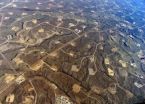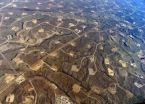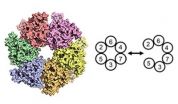(Press-News.org) The co-authors of a new study, including two Simon Fraser University research associates, cite new reasons why scientists, industry representatives and policymakers must collaborate closely on minimizing damage to the natural world from shale gas development. Viorel Popescu and Maureen Ryan, David H. Smith Conservation Research Fellows in SFU's Biological Sciences department, are among eight international co-authors of the newly published research in Frontiers in Ecology and the Environment.
Shale gas development is the extraction of natural gas from shale formations via deep injection of high-pressure aqueous chemicals to create fractures (i.e., hydraulic fracturing), which releases trapped gas. With shale gas production projected to increase exponentially internationally during the next 30 years, the scientists say their key findings are cause for significant concern and decisive mitigation measures.
"Our findings are highly relevant to British Columbians given the impetus for developing shale resources in northeastern B.C. and the massive LNG facilities and pipeline infrastructure under development throughout the province," notes Popescu. The SFU Earth2Ocean Group member is also a research associate in the Centre for Environmental Research at the University of Bucharest in Romania.
Key study findings:
One of the greatest threats to animal and plant-life is the cumulative impact of rapid, widespread shale development, with each individual well contributing collectively to air, water, noise and light pollution.
"Think about the landscape and its habitats as a canvas," explains Popescu. "At first, the few well pads, roads and pipelines from shale development seem like tiny holes and cuts, and the canvas still holds. But if you look at a heavily developed landscape down the road, you see more holes and cuts than natural habitats. Forests or grasslands that were once continuous are now islands fragmented by a dense web of roads, pipelines and well pads. At what point does the canvas fall apart? And what are the ecological implications for wide-ranging, sensitive species such as caribou or grizzly bears?"
Determining the environmental impact of chemical contamination from spills, well-casing failure and other accidents associated with shale gas production must become a top priority.
Shale-drilling operations for oil and natural gas have increased by more than 700 per cent in the United States since 2007 and Western Canada is undergoing a similar shale gas production boom. But the industry's effects on nature and wildlife are not well understood. Accurate data on the release of fracturing chemicals into the environment needs to be gathered before understanding can improve.
The lack of accessible and reliable information on spills, wastewater disposal and fracturing fluids is greatly impeding improved understanding. This study identifies that only five of 24 American states with active shale gas reservoirs maintain public records of spills and accidents.
The authors reviewed chemical disclosure statements for 150 wells in three top-gas producing American states and found that, on average, two out of three wells were fractured with at least one undisclosed chemical. Some of the wells in the chemical disclosure registry were fractured with fluid containing 20 or more undisclosed chemicals.
The authors call this an arbitrary and inconsistent standard of chemical disclosure. This is particularly worrisome given the chemical makeup of fracturing fluid and wastewater, which can include carcinogens and radioactive substances, is often unknown.
"Past lessons from large scale resource extraction and energy development —large dams, intensive forestry, or biofuel plantations — have shown us that development that outpaces our understanding of ecological impacts can have dire unintended consequences," notes Ryan. She is a research fellow in the University of Washington's School of Environmental and Forest Sciences.
"It's our responsibility to look forward. For example, here in Canada, moving natural gas from northeastern B.C. to the 16 proposed LNG plants would require hundreds of kilometers of new pipeline and road infrastructure, and large port terminals on top of the effects of drilling. We must not just consider the impact of these projects individually, but also try to evaluate the ecological impacts holistically."
INFORMATION:
Simon Fraser University is consistently ranked among Canada's top comprehensive universities and is one of the top 50 universities in the world under 50 years old. With campuses in Vancouver, Burnaby and Surrey, B.C., SFU engages actively with the community in its research and teaching, delivers almost 150 programs to more than 30,000 students, and has more than 130,000 alumni in 130 countries.
Contact:
Viorel Popescu (Burnaby resident) 604.340.4228, vioreldpopescu@gmail.com (Note: Limited email and no phone contact Aug. 8-17)
Maureen Ryan (Bellingham, Wash. resident), 1.360.685.3640, moryan@uw.edu (Note: Unavailable Aug. 1-15)
Carol Thorbes, PAMR, 778.782.3035, cthorbes@sfu.ca (Note: away Aug. 1-8)
Marianne Meadahl, PAMR, 778.782.9017 (Mon-Thurs), 778.782.4323 (Fri), marianne_meadahl@sfu.ca
Scientists warn time to stop drilling in the dark
2014-08-01
ELSE PRESS RELEASES FROM THIS DATE:
Female baby boomers with asthma? You may need help
2014-08-01
ARLINGTON HEIGHTS, Ill. (August 1, 2014) – Women over the age of 65 face numerous barriers to good health: an increased risk for obesity, greater struggles against poverty and higher rates of asthma with worse health outcomes. An article published in the August issue of Annals of Allergy, Asthma and Immunology, the scientific publication of the American College of Allergy, Asthma and Immunology (ACAAI), outlines the challenges faced by older women in treating asthma, and offers practical solutions to improve their care.
"Allergists want older women to understand that ...
New guidelines help keep asthma out of 'yellow zone'
2014-08-01
ARLINGTON HEIGHTS, Ill. (August 1, 2014) – If you have asthma, you may have an asthma action plan with a "stoplight system" to help you recognize and respond to changes and understand when symptoms are getting worse and need more attention. If you're in the green zone, you're doing well, yellow means your asthma has worsened and action is needed, and red means you require urgent care. New guidelines are now available to help your allergist steer you out of the yellow zone, back into green and away from the red zone.
"Management of acute loss of asthma control in the ...
Recent use of some birth control pills may increase breast cancer risk
2014-08-01
PHILADELPHIA — Women who recently used birth control pills containing high-dose estrogen and a few other formulations had an increased risk for breast cancer, whereas women using some other formulations did not, according to data published in Cancer Research, a journal of the American Association for Cancer Research.
"Our results suggest that use of contemporary oral contraceptives [birth control pills] in the past year is associated with an increased breast cancer risk relative to never or former oral contraceptive use, and that this risk may vary by oral contraceptive ...
Light pulses control graphene's electrical behavior
2014-08-01
CAMBRIDGE, Mass-- Graphene, an ultrathin form of carbon with exceptional electrical, optical, and mechanical properties, has become a focus of research on a variety of potential uses. Now researchers at MIT have found a way to control how the material conducts electricity by using extremely short light pulses, which could enable its use as a broadband light detector.
The new findings are published in the journal Physical Review Letters, in a paper by graduate student Alex Frenzel, Nuh Gedik, and three others.
The researchers found that by controlling the concentration ...
'Fracking' in the dark: Biological fallout of shale-gas production still largely unknown
2014-08-01
In the United States, natural-gas production from shale rock has increased by more than 700 percent since 2007. Yet scientists still do not fully understand the industry's effects on nature and wildlife, according to a report in the journal Frontiers in Ecology and the Environment.
As gas extraction continues to vastly outpace scientific examination, a team of eight conservation biologists from various organizations and institutions, including Princeton University, concluded that determining the environmental impact of gas-drilling sites — such as chemical contamination ...
For bats and dolphins, hearing gene prestin adapted for echolocation
2014-08-01
A little over a decade ago, prestin was found to be a key gene responsible for hearing in mammals. Prestin makes a protein found in the hair cells of the inner ear that contracts and expands rapidly to transmit signals that help the cochlea, like an antique phonograph horn, amplify sound waves to make hearing more sensitivity.
Now, in a new study published in the advanced online edition of Molecular Biology and Evolution, Peng Shi, et al., have shown that prestin has also independently evolved to play a critical role in the ultrasonic hearing range of animal sonar, ...
Scientist underlines threat of inevitable 'solar super-storms'
2014-08-01
In this month's issue of Physics World, Ashley Dale from the University of Bristol warns of the "catastrophic" and "long-lasting" impacts of "solar super-storms" and the dangers we face if the threat continues to go unnoticed.
Dale, who was a member of an international task force – dubbed SolarMAX – set up to identify the risks of a solar storm and how its impact could be minimized, explains how it is only a matter of time before an exceptionally violent solar storm is propelled towards Earth. Such a storm would wreak havoc with our communication systems and power supplies, ...
Harmful drinkers would be affected 200 times more than low risk drinkers with an MUP
2014-08-01
A new study of liver patients by the University of Southampton shows that a Minimum Unit Price (MUP) policy for alcohol is exquisitely targeted towards the heaviest drinkers with cirrhosis.
Published today in Clinical Medicine, the peer review journal for the Royal College of Physicians, the researchers studied the amount and type of alcohol drunk by 404 liver patients, and also asked patients how much they paid for alcohol. They found that patients with alcohol related cirrhosis were drinking on average the equivalent of four bottles of vodka each week, and were buying ...
Depressive symptoms and pain may affect health outcomes in dialysis patients
2014-08-01
Washington, DC (July 31, 2014) — Depressive symptoms and pain in patients on dialysis may have serious negative consequences for patients' health and increase the need for costly medical services, according to a study appearing in an upcoming issue of the Clinical Journal of the American Society of Nephrology (CJASN). The findings indicate that studies should evaluate the potential of anti-depressant and analgesic therapies to improve patient outcomes and reduce costs.
Depressive symptoms and pain are common in kidney failure patients receiving chronic hemodialysis, but ...
Molecular gate that could keep cancer cells locked up
2014-08-01
In a study published today in Genes & Development, Dr Christian Speck from the MRC Clinical Sciences Centre's DNA Replication group, in collaboration with Brookhaven National Laboratory (BNL), New York, reveal the intricate mechanisms involved in the enzyme that governs DNA duplication during cell division. By developing a sophisticated system using synthetic, chemical and structural biology approaches, the study reveals how a key enzyme involved in duplicating genetic information embraces DNA through a gated system, which opens up at precise positions allowing for a highly ...




